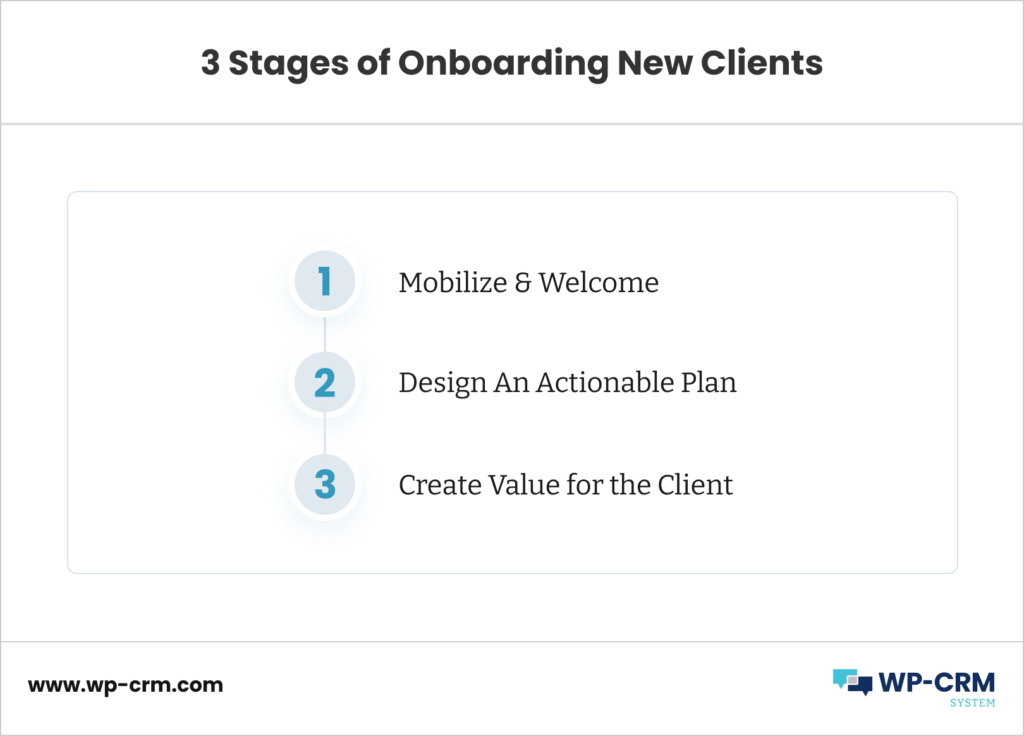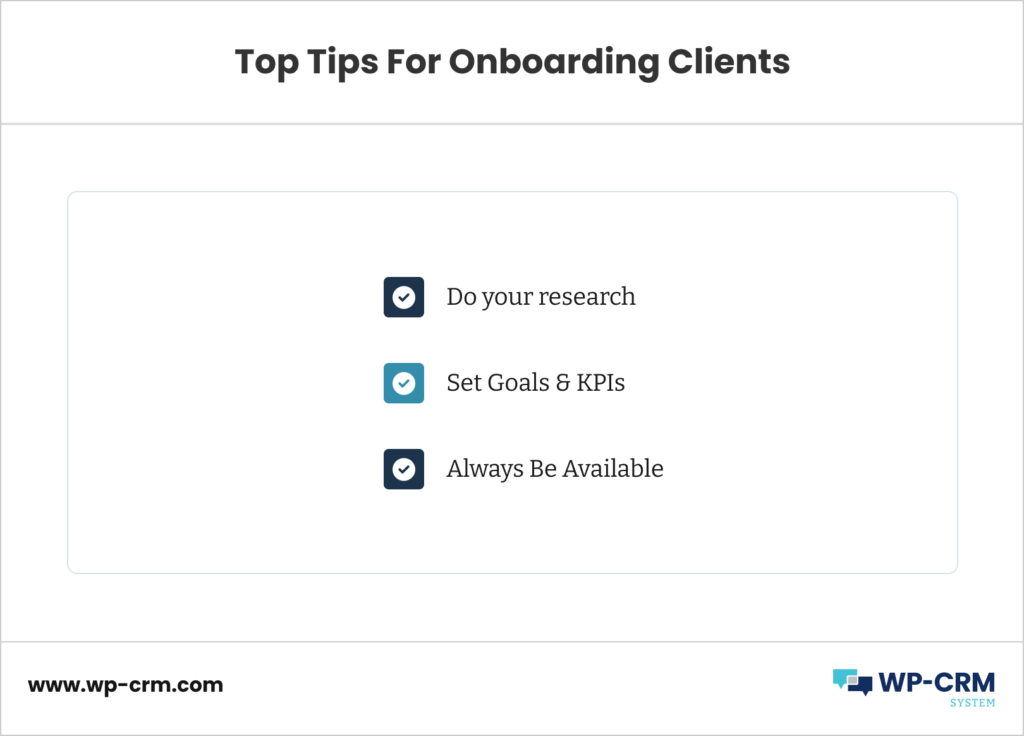3 Tips for Onboarding Clients to Your CRM System
Finding and onboarding clients takes a lot of effort. First, you need a robust lead generation strategy. Then, a refined and seamless sales process. After the prospect becomes a paying client, it’s time to nurture them through a well-thought onboarding process.
Client onboarding is a critical step in the process of getting new customers hooked on your product. This begins after they’ve signed up and extends through their first few months/years with you. During this time, it’s important to ensure that everything goes well for them. Also, boosting customer satisfaction levels leads to increased loyalty as well!
In this article, we will describe the stages of successfully onboarding clients to your CRM system and share 3 top tips to make sure you do it right.
Stages of Onboarding Clients

Onboarding clients to your CRM system is all about educating them about the features available. Also, this way you show them the ropes to effectively use them to benefit their business. Usually, every client onboarding process goes through the following stages:
Mobilize & Welcome
Handing off from your sales team to customer success is vital in the after-sale process. This includes providing all necessary information about the next steps. You also need to preview future phases or content that may be coming out soon. At the beginning of your client relationship, you need to hold their hand towards a digital onboarding message. Offer more guidance when it’s time for them to stop hearing from you.
A CRM system helps ensure clients know what they’re expected going forward. Its robust capabilities with handoffs from the sales team to marketing make this initial stage smooth and problem-free. Also, welcoming the new client is broken down into easy-to-follow steps so there is no room for discrepancies.
Design An Actionable Plan
The next stage when onboarding clients is setting clear expectations and defining the strategy to achieve them. The onboarding process ensures that new clients get a taste of what using your product is like. It also helps you know them better and outline their objectives. This way, when your customers are later on in the program or after deployment, there will be no guesswork. As a result, they will know how to measure effectiveness because all key indicators have been set from day one!
Typically, this stage is handled by a member of the marketing department. Your client onboarding team is responsible for working with the customer. They need to ensure a smooth and successful transition to the new product or service. This includes creating a system and process that will enable the customer’s organization to quickly utilize the new offering. It may also include training plans to educate the customer on how to use the new product or service. In addition, your team will monitor the customer’s progress and provide feedback to the company on how the transition is going.
Create Value
So, you’ve reached the end users of the client and deployed successfully. Next, it is time to assess how exactly they have adopted the product/service.
To ensure that customers have a great experience, it is important to get feedback from your clients constantly and know if they think your product is of high quality. Also, this way you can identify and fix weak points your team may have ignored. Great customer service is fundamental to making people feel welcomed when coming into contact with your business.
3 Best Practices for Onboarding Clients

Know Your Clients
Analyzing your clients and their behavior and requirements is crucial for their successful onboarding. As a result, you can make informed data-driven decisions and create an effective process that involves all of your team. You can use Google Alerts to watch what your client is up to at all times.
Also, make sure all your employees have access to all client information – an integrated solution like WP-CRM is a great way to store all essential details in one place.
Successful client onboarding starts with getting a 360-degree view of your customers. This includes tracking not just their product usage, but also contract and transactional data. Also, keep an eye on demographic information such as age range (to find out what kind of people are buying from you), location(s) where they buy from (eCommerce sites especially). In addition, monitor their behavioral trends within different channels over time (website visits vs mobile app downloads etc.).
Set KPIs And Targets

KPIs are an important tool for any company that wants to build a successful client onboarding process. In customer relationship management, KPIs help shows how well your organization is doing at creating satisfied customers and what areas need improvement with onboarding processes. As a result, you can ensure your team members always deliver the best possible experience when dealing directly one-on-one with clients or potential clientele alike.
The best thing you can do for your business is to make sure that every customer feels as though they are the only person in mind. A satisfied client will spend more money, refer others to use their services and recommend it highly when compared with other companies who don’t provide such great service or products!
Given the importance of customer satisfaction, it is critical to set goals during the onboarding process. This will allow you to track a customer’s progress and ensure that they are meeting expectations. If a customer is not meeting these targets, proactive intervention may be necessary. You can assess them against time the onboarding takes, customer progression and their response rate.
Always Be Available
The client onboarding process can be overwhelming and confusing for customers. They might have questions about how to use your product or service, or they may be confused about a part of the process along the way. However, you don’t want them to stay in such a state for long, or you risk losing them to a competitor! So, to help new clients out as much as possible, provide an easy way to contact the relevant person from your team.
Also, don’t rely on automated emails and chat boxes. After all, the main goal is to decrease customer churn by taking proper care of our clients. Hence, be sure to train a dedicated customer service team and explicitly point this out to your customers.
To Recap
By providing a great client onboarding experience, you are setting the tone for a trusting and fruitful relationship with your new customers. It’s important to be available at all times during this stage so that they feel supported and informed every step of the way. Do your research on their behavior and preferences, and identify clear KPIs and targets. With the help of WP-CRM, you can manage client onboarding data like a pro – ensuring that no detail is forgotten along the way.
